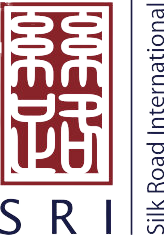Global Sources Electronics Show 12 April 09--"Buying From China: What New Buyers Need to Know.
Theres are my notes from day one of the presentations at the Global Sources Electronic and Components Show seminar "Buying from China: What New Buyers Need to Know." Participating Companies in the Global Sources seminar today included:Silk Road International, Sourcing and Project ManagementSGS, Third Party Inspections and TestingPassagemaker, 3rd Party Secure Procurement, Manufacturing and AssemblySchenker, International Logistics100-300 people usually attend each session of the conference. The seminar is free and there will be more held today and tomorrow. My presentation topic today is "Smart steps for effective sourcing in Tough Economic Times. Other presentations include Protection of IP, Eco-design and Negotiations.1. Make sure that you’re more worried about specific business issues than you are about general cultural issues. Don’t worry about screwing up the cultural things; the Chinese are great hosts and rather forgiving toward “stupid” foreigners. Having said that now, I do believe that cultural miscommunications will derail your production faster than business miscommunications will. I’m talking about offending people, not handing your business cards over the wrong way. Not giving appropriate face to a manager, not refusing to eat the duck tongue. So be careful.2. Specify the details for the packaging for both air and sea shipments as they should be different. People are often very concerned about the product and less concerned about the (outer) packaging. But if the packaging is great for a container load but not sturdy enough for air-freight, all your great product will be worthless by the time it’s delivered to your door.3. If you do not start to prepare to protect you IP BEFORE you come to China you will be to late to protect it fully after you’re here. With the lower levels of orders in the last year, there are more and more people that are willing to break the rules to make a Yuan. Either protect yourself or lose your advantage (and your IP—and maybe your whole brand).4. According to the folks as SGS (whom I agree with) most of the QC problems can be boiled down to YOU helping your supplier clearly understand their rolls responsibilities, your standards and, above all, clear communications about every change and detail. YOU’VE got to train your suppliers to meet the standards that you’re looking to achieve. YOU then have to follow up to make sure that they both understand their responsibility in achieving that and the process needed to achieve it. Sure, they have to do their part, but you have to both details the standards, enforce the standards consistently and then confirm that the standards are met. This is a harsh reality, you need to act like it’s all your responsibility and take steps that that end. Regardless of which party does or doesn’t do fulfill their part of the contract, it’s your fault, not theirs, if substandard but approved products shows up in your home country.Here are the minimum points where you need to be checking on your factory’s quality.• Raw materials QC and testing,• Sample QC and testing,• warehouse/materials storage QC,• in-line QC and testing,• finishing/packaging QC and testing,• final QC and container loading.5. Don’t leave doing the shipping research for last. If you like your profit margins and have done all other due diligence the product could still be a financial dud if you’ve not done all your shipping/customs research. Logistics equates to about 20-30% of the cost of goods sold from China (as opposed to 10% of so for US and the EU). At 30+ days onto that and you have a significant additional expense to consider. Also, taxes, duties and fees can be very expensive. Free (yea!) and 3-6% are certainly tolerable and typical. But duties of 17% to 200% (which we’ve seen kill projects before) are also common and you must prepare for them very early on.6. Finally, remember, payment terms and INCO terms are not the same. When you pay (Payment terms) and who is responsible for what portion of the shipping invoice (INCO terms) are completely different.
